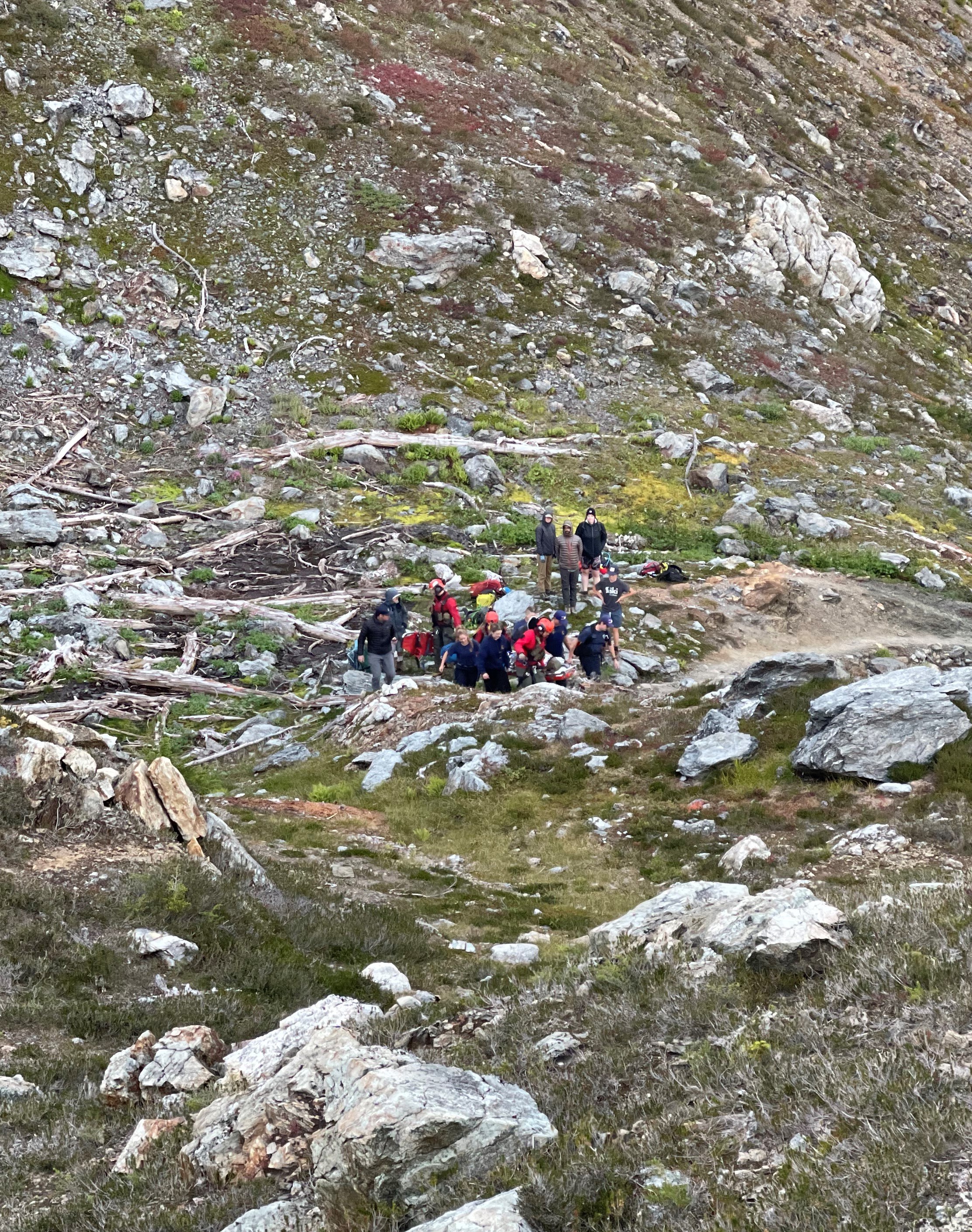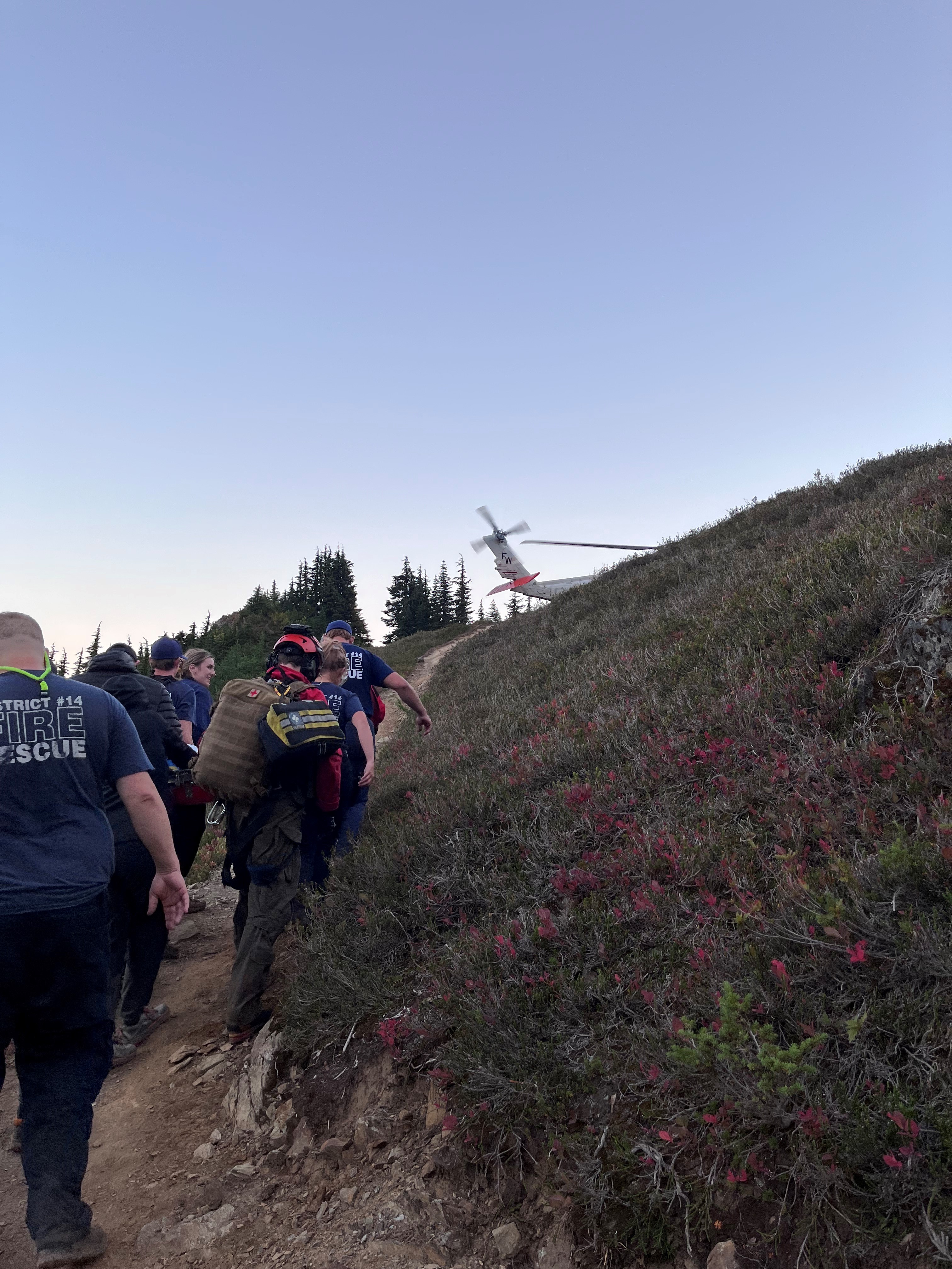
NAVAL AIR STATION WHIDBEY ISLAND, Wash. – A Search and Rescue (SAR) team from Naval Air Station (NAS) Whidbey Island rescued a 73-year-old female hiker with a broken ankle on the Yellow Aster Butte Trail northeast of Mount Baker on Sept. 19, 2022.
The SAR crew was alerted at a little before 6 p.m. that a hoist rescue was required. The SAR crew launched at about 6:30 p.m. after getting more refined information from the Whatcom County Sheriff’s Office and fire rescue crews that had hiked in to the patient. When they arrived at the location they found the winds and elevation were too dangerous for a hoist rescue so they landed approximately 60 yards upslope on the crest of a ridge.
With the help of the rescue personnel on the ground the patient was carried up to the waiting aircraft. The patient was transported to St. Joseph Medical Center in Bellingham, Wash. where they arrived just before 7:30 p.m.
Naval Air Station Whidbey Island SAR has conducted 31 missions this calendar year, which includes nine MEDEVACs, 17 rescues, and five searches.

Naval Air Station Whidbey Island Search and Rescue (SAR) crew members work with Whatcom County Sheriff’s Office and Fire/Rescue crews to move a 73-year-old female patient with a broken ankle to the waiting SAR helicopter in the evening of September 19, 2022. The patient was injured on Yellow Aster Butte Trail northeast of Mount Baker and transported to St. Joseph’s Hospital in Bellingham, Wash.
The Navy SAR unit operates three MH-60S helicopters from NAS Whidbey Island as search and rescue/medical evacuation (SAR/MEDEVAC) platforms for the EA-18G aircraft as well as other squadrons and personnel assigned to the installation. Pursuant to the National SAR Plan of the United States, the unit may also be used for civil SAR/MEDEVAC needs to the fullest extent practicable on a non-interference basis with primary military duties according to applicable national directives, plans, guidelines and agreements; specifically, the unit may launch in response to tasking by the Air Force Rescue Coordination Center (based on a Washington State Memorandum of Understanding) for inland missions, and/or tasking by the United States Coast Guard for all other aeronautical and maritime regions, when other assets are unavailable.






